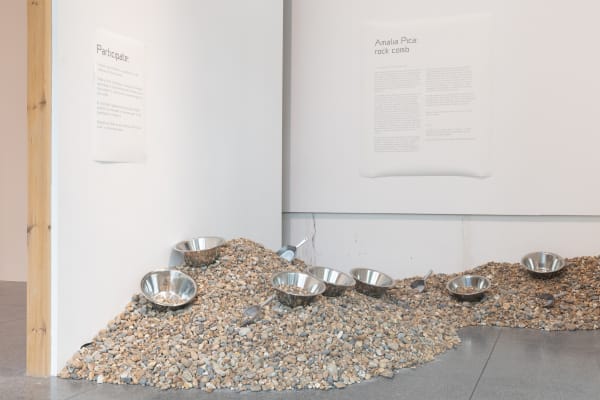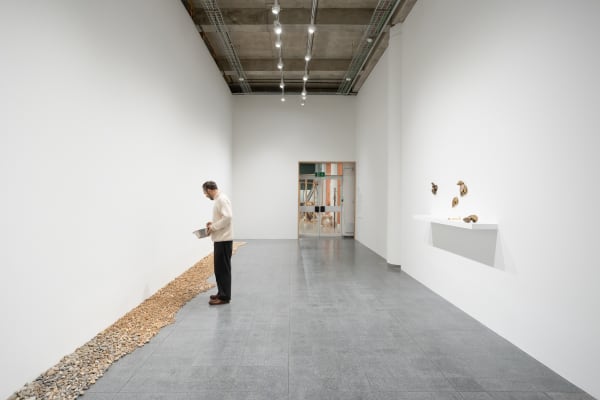Amalia Pica: rock comb: Brighton CCA, Brighton, UK
This commission from artist Amalia Pica continues the artist’s investigation into social constructs of joy, collaboration and the politics of labour. Following the 1949 Coastal Protection Act, removal of stones from Brighton beach is illegal. For rock comb Pica invites visitors to join her in creating a rock carpet using stones borrowed from Brighton’s iconic pebble beach, arranging them by colour on the gallery floor.
This shared action, echoing the often repetitive work of preindustrial labour or the production of Latin American flower carpets; will gradually transform the installation from a material pile reminiscent of a beach dune, to a carefully constructed image resembling a painting or woven fabric. A shift from exterior space to domestic interior. Through this collaborative process Pica is inviting visitors to consider the value of both individual and collective work and how individual choices can impact a wider group. The process of sorting is an application of knowledge and an articulation of how we understand our environment. So equally the art work can be read as a metaphor for knowledge; the ways we sort and order ourselves, how we locate authority in the world around us, and the responsibility we hold in that process.
As part of the evolving installation, there is a ledge running along the side of the gallery at a height and width of a mantlepiece above a domestic fireplace. Here Pica has placed a number of shells cast in bronze, recalling the displays of trinkets and keepsakes brought back from the beach. A further reference to the fetishization of objects and materials from the natural world within domestic interiors. They are also jewel like in both their material and form using a language of treasure and luxury.
Within the pebble dune Pica has placed a number of gilded rocks; particular stones covered with gold leaf from a different source. Should they be discovered, these can either be taken away by visitors or placed on the shelf to become part of the exhibition. Finding a gilded rock will be rare and not everyone will do so. For some they may be a motivation or a goal, for others an irrelevance or a distraction. They represent the possibility for sharing or enrichment, collaboration or private enjoyment.
At the culmination of the exhibition the work will be dispersed. The pebbles returned to the beach to continue their drift along the coast, the bronze shells to the artist’s studio and the gilded rocks to the homes of those that chose to take them away.
Photo by Rob Harris









